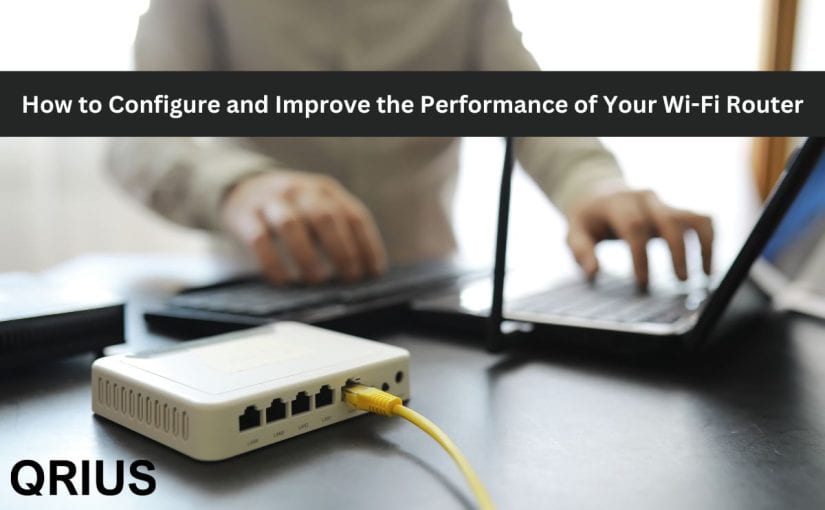Too sluggish of an internet connection? Your home Wi-Fi network might benefit greatly from these small router adjustments.
Your internet connection speed can significantly increase with a decent router. What other options are available to you if you lack the funds to purchase a top-of-the-line model?
If you want to learn how to set up the best router setup for faster internet or how to optimise router settings for speed, continue reading.
Schedule a Reboot Automatically
Most modern routers don’t require routine rebooting. However, as most people are aware, restarting your router is frequently all that is necessary to bring you back online if you have ever experienced a dead internet connection.
However, the DD-WRT and Tomato firmware alternatives provide timed reboot settings if you find yourself resetting the router frequently. You won’t even notice the downtime when the router turns off and on if you set it to reboot once a day while you’re asleep.
Upgrade Your Antenna to Speed Up Your Router
Investing in a new antenna is a quick and easy approach to speed up a router.
Most routers made for consumers have terrible antennas. Without the need for a new device, signal quality may be easily improved (and speed increased) using an amplified aftermarket antenna. Options for powered and amplified aftermarket products range in price from $15 to the low hundreds.
Plug-in range extenders cost a little more, but they combine the functions of a powered antenna and a wireless repeater. Homes with dead zones or signal degradation can be greatly improved by them, although results may vary.
However, before purchasing a large antenna, confirm your area’s wireless broadcasting regulations. It’s against the law in some places to boost your Wi-Fi signal (or could be unlawful over a certain threshold).
Put older wireless protocols to rest
How can router settings be made faster? Turning off outdated Wi-Fi protocols is one of your first options.
Newer routers that use the 802.11ax standard have capabilities much beyond those of many ISPs. Even while the router may be quick, many of your devices are probably still utilising antiquated protocols, like 802.11b, which causes the network to sluggishly slow down as soon as this device joins. Ideally, you have to take out any equipment that is utilising the b or g protocols.
Axe> ac > n > g > b are the quickest protocols, from fastest to slowest. To learn how to accomplish this, refer to your router’s manual.
Channel Width can be modified.
What about the ideal router configurations to increase network speed locally? For instance, what are some simple ways to transmit video across your devices?
Changes to the channel width are frequently necessary for the optimum router setup for local speed. The bigger the width, the more interference will be experienced by older devices using older protocols.
Revisit Your Router
Making sure your router is constantly using the most recent software and firmware from the manufacturer is one of the most underutilised ways to increase router speed.
Yes, the upgrades typically correct security issues, but they won’t instantly make your network blasingly fast. But every little improvement counts. If you haven’t updated in some time, you could see a greater bump than you anticipated.
Change the location of your router
Finding the ideal router settings for fast internet requires more than just that. You should also think about where in your house you want to put your router.
Subtle changes can frequently make a huge effect because the router competes with every other 2.4GHz and/or 5GHz device in your vicinity. Additionally, the wireless signal may be hampered by the materials used to create your home. For instance, it is infamously difficult for a Wi-Fi connection to penetrate through solid concrete walls.
Improve the Channel Settings on Your Router
Let’s revisit the topic of configuring a router to make it quicker.
Have you given the router’s channel any thought? Your local airwaves may be scanned for the channels with the least interference using a variety of free software. They will then recommend a channel for you to change to.
The channel must be modified in the router’s settings. Once more, consult the manual or online help section for your device to learn how to proceed.
Change the Router’s Band to a Different One
The average home is filled with wireless technology. Fortunately, you may separate them using a dual- or tri-band router to increase speeds.
Simply put, you’re creating an additional network traffic channel. Two (or three) lanes are preferable for everyone concerned even though a one-lane road will get you there.
Instead of all your devices fighting for a spot in the 2.4GHz band, you may allocate them to the extra (and often less congested) 5GHz band if your network has two bands.
Conclusion:
After configuring your router, you may unwind without worrying about outsiders attempting to access your network. However, since hackers are continually creating more effective cracking tools to access encrypted networks, you can never be certain. But you should still take the required safety measures. Keep up the practice of routinely changing passwords, SSID names, and the router’s IP address range.
